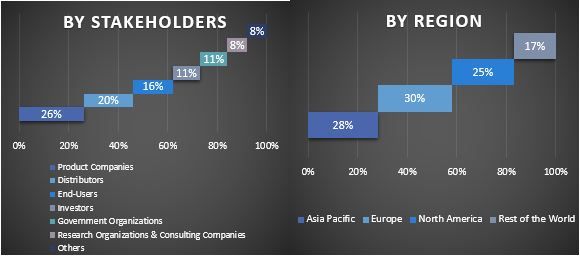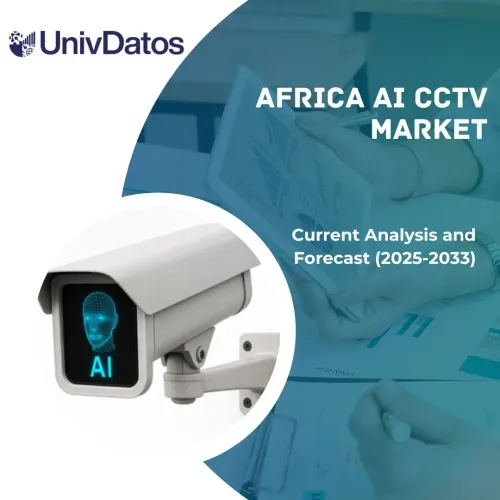- Strona główna
- O nas
- Branża
- Usługi
- Czytanie
- Kontakt
Rynek czujników swobodnego spadania: Aktualna analiza i prognoza (2024-2032)
Nacisk na typ czujnika (akcelerometry, żyroskopy i czujniki wieloosiowe); Zastosowanie końcowe (elektronika użytkowa, motoryzacja, opieka zdrowotna, przemysł i produkcja, lotnictwo i obrona oraz inne); Region/Kraj.
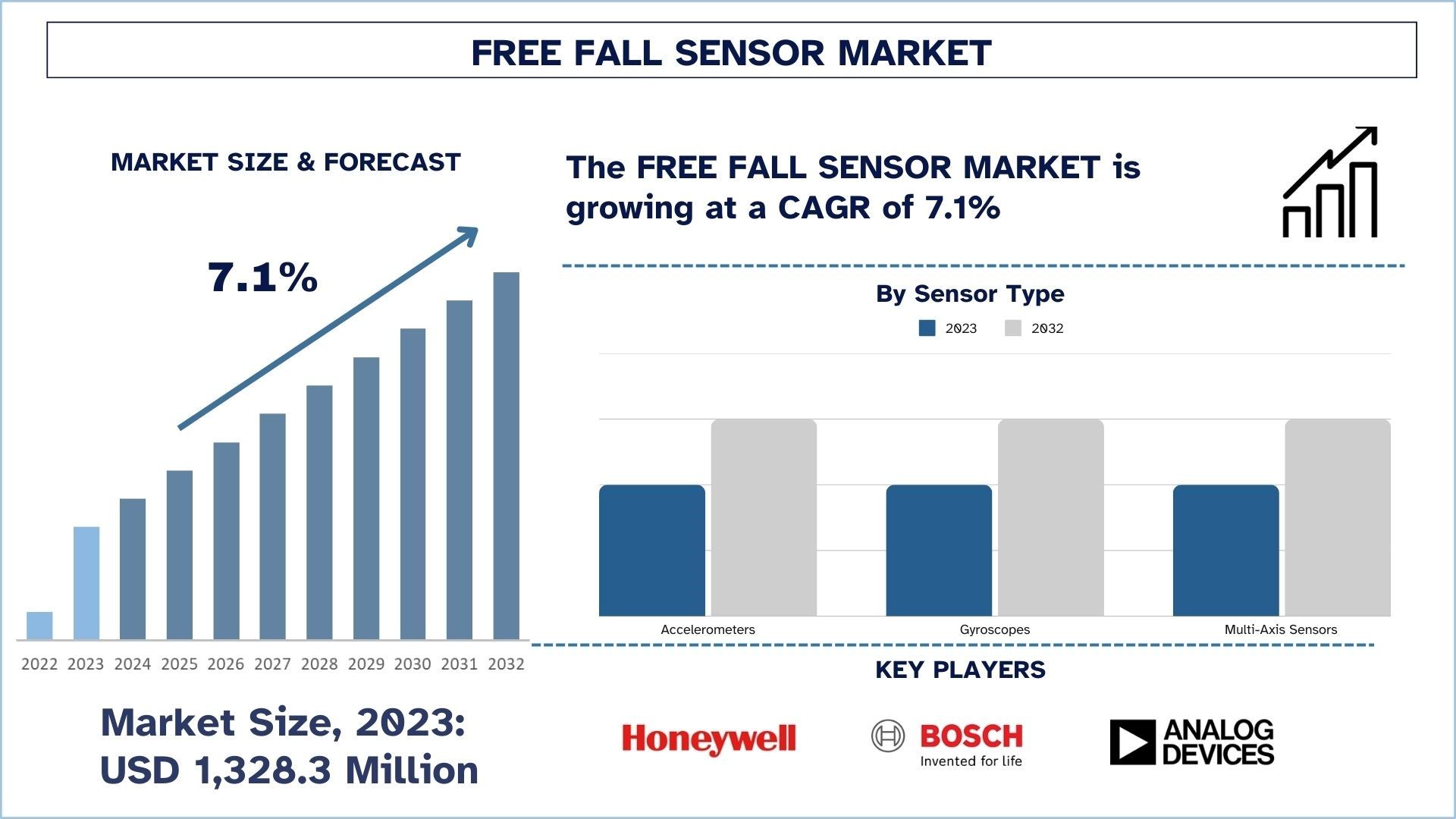
Wielkość i prognozy rynku czujników swobodnego spadania
Wartość rynku czujników swobodnego spadania oszacowano na 1 328,3 mln USD w 2023 r. i oczekuje się, że w okresie prognozy (2024–2032) będzie rósł w szybkim tempie, przy średniorocznym wzroście (CAGR) wynoszącym około 7,1% ze względu na rosnące zapotrzebowanie na funkcje bezpieczeństwa i ochrony w elektronice użytkowej, systemach samochodowych i zastosowaniach przemysłowych.
Analiza rynku czujników swobodnego spadania
Wdrażanie czujników swobodnego spadania wykazuje szybką ekspansję rynkową ze względu na rosnące wymagania dotyczące bezpieczeństwa w połączeniu ze zwiększonym popytem na urządzenia do wykrywania ruchu w wielu branżach. Czujniki swobodnego spadania istnieją głównie w celu identyfikacji nagłych ruchów, które chronią komponenty w elektronice wraz z samochodowymi systemami, urządzeniami medycznymi i maszynami przemysłowymi przed uszkodzeniem. Rosnące wdrażanie systemów autonomicznych i inteligentnych urządzeń technologicznych prowadzi do ekspansji rynku. Rozwój elektroniki użytkowej w połączeniu z naciskiem na bezpieczeństwo w motoryzacji, starzejącą się populacją świata oraz ciągłym udoskonalaniem technologii czujników, skoncentrowanym na MEMS (mikroelektromechanicznych systemach), napędza ten rynek. Wiele branż wdraża systemy czujników, ponieważ służą one do zastosowań w mobilnej elektronice i urządzeniach do noszenia, a także w sprzęcie przemysłowym i systemach bezpieczeństwa w motoryzacji.
Najszybszy wzrost rynku czujników swobodnego spadania nastąpi w regionie Azji i Pacyfiku, zwłaszcza w Chinach i Indiach. Stale rosnąca produkcja elektroniki w Chinach wraz z potrzebami w zakresie bezpieczeństwa pojazdów dla inteligentnych urządzeń zaowocowała ogromną ekspansją rynku. Rynek czujników korzysta z entuzjastycznych chińskich prac nad innowacjami w zakresie pojazdów autonomicznych, a jego trwałe produkty elektroniczne przyciągają znaczny popyt jako główna siła napędowa rynku. Indie wykazują szybkie wdrażanie zaawansowanych technologii ze względu na rosnącą klasę średnią, rozwijający się rynek elektroniki użytkowej i rozwijający się przemysł motoryzacyjny. Wraz ze wzrostem wykorzystania technologii do noszenia wraz z inteligentnymi urządzeniami domowymi i systemami monitorowania stanu zdrowia w kraju, obecny popyt na czujniki rośnie w tandemie. Wzrost rynku pozostanie silny w nadchodzących latach, ponieważ każdy kraj rozszerza swoje cyfrowe transformacje i dokonuje coraz większych inwestycji w innowacyjne technologie we wszystkich branżach.
Trendy na rynku czujników swobodnego spadania
W tej sekcji omówiono kluczowe trendy rynkowe, które wpływają na różne segmenty rynku czujników swobodnego spadania, zidentyfikowane przez nasz zespół ekspertów ds. badań.
Rosnący popyt na elektronikę użytkową
Elektronika użytkowa, w tym smartfony, laptopy, tablety i urządzenia do noszenia, stymuluje znaczny wzrost na rynku czujników swobodnego spadania ze względu na zwiększone poleganie na niej. Włączenie czujników swobodnego spadania przez producentów służy poprawie trwałości produktu poprzez ochronę krytycznych funkcji, w tym dysków twardych wraz z ekranami i obwodami wewnętrznymi przed przypadkowymi upadkami. Wskaźniki wdrażania technologii do noszenia są głównym czynnikiem przyczyniającym się do zwiększonego popytu na czujniki swobodnego spadania, ponieważ urządzenia te potrzebują wydajnych czujników dla doskonałej wydajności wraz z ochroną użytkownika.
Rosnące standardy bezpieczeństwa w motoryzacji
Producenci pojazdów zwiększają integrację czujników swobodnego spadania, aby spełnić wymagania bezpieczeństwa branży i poprawić zarówno zgodność pojazdu, jak i ogólną wydajność. Obecność czujników swobodnego spadania pozostaje kluczowa dla obsługi wielu aplikacji, w tym systemów uruchamiania poduszek powietrznych, wykrywania kolizji i zaawansowanych systemów wspomagania kierowcy (ADAS). Technologia pojazdów elektrycznych i autonomicznych zwiększyła zapotrzebowanie na złożone systemy czujników, co sprawia, że czujniki swobodnego spadania są niezbędne do zabezpieczenia samochodów i ochrony ich pasażerów.
Rozwój technologii do noszenia
Rynek czujników swobodnego spadania znacznie się rozszerzył, ponieważ więcej konsumentów korzysta z inteligentnych zegarków do noszenia, a także monitorów fitness i systemów monitorowania stanu zdrowia. Funkcje bezpieczeństwa ludzi, a także precyzyjne pomiary danych mogą być zasilane przez czujniki swobodnego spadania, które zapewniają możliwości śledzenia ruchu i śledzenia upadków wraz z funkcjami obrony przed uderzeniami. Udoskonalona konstrukcja kompaktowych, małych systemów czujników swobodnego spadania jest kontynuowana ze względu na rosnący popyt na urządzenia do noszenia w opiece zdrowotnej w opiece nad osobami starszymi i aplikacjach do śledzenia kondycji.
Automatyzacja przemysłowa i integracja IoT
Czujniki swobodnego spadania korzystają z automatyzacji przemysłowej i wdrażania urządzeń podłączonych do IoT, aby tworzyć inteligentne aplikacje produkcyjne i sprzęt przemysłowy. Czujniki te analizują maszyny przemysłowe, identyfikując nagłe kolizje, aby poprawić bezpieczeństwo operacyjne w miejscach produkcji. Czujniki swobodnego spadania doświadczają rozszerzających się możliwości wdrażania dzięki technologiom IoT w produkcji wraz z logistyką i budownictwem, co pozwala na wykrywanie w czasie rzeczywistym, zapewniając jednocześnie predykcyjne utrzymanie w celu zwiększenia efektywności operacyjnej i ochrony bezpieczeństwa pracowników.
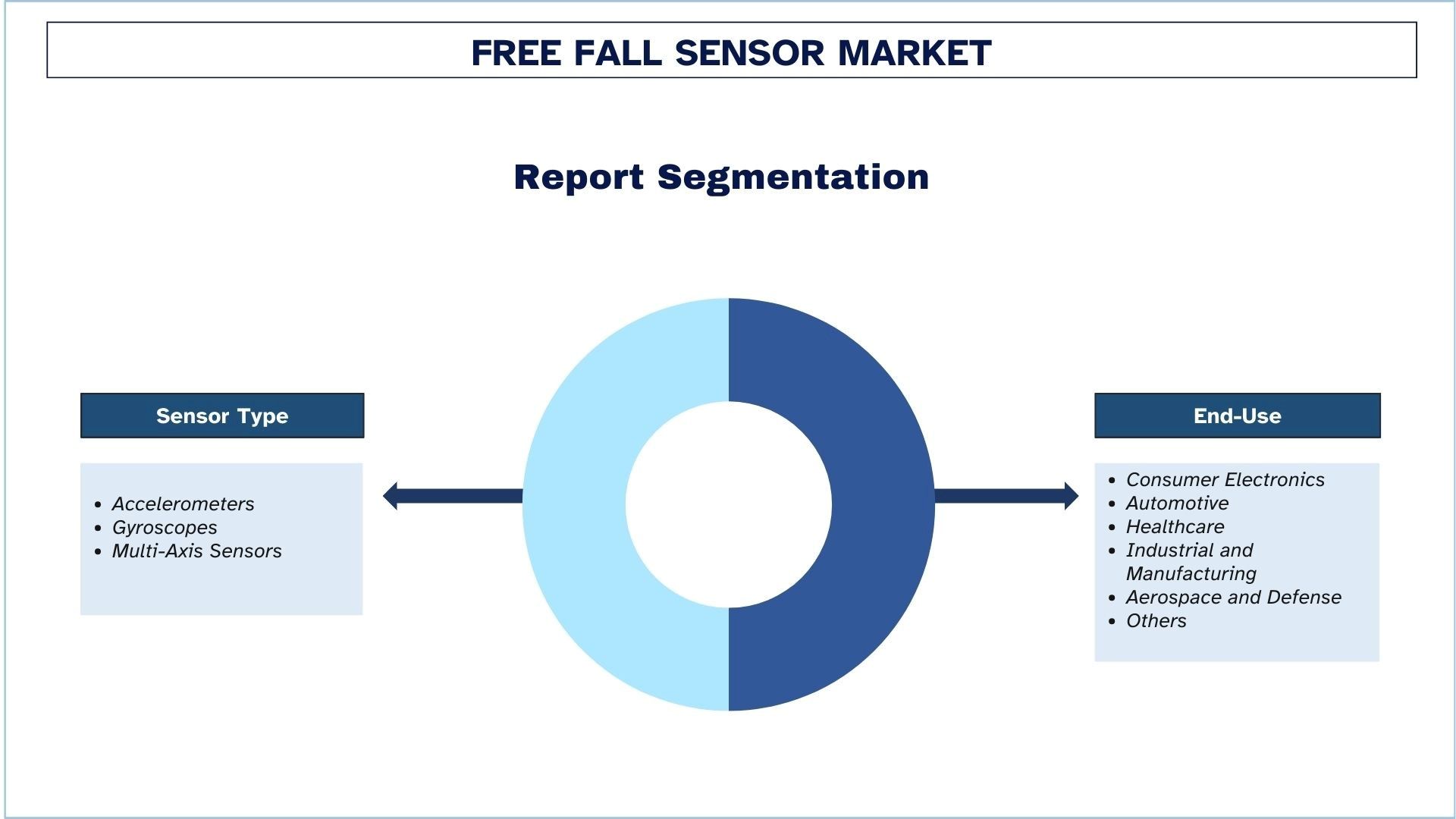
Oczekuje się, że region APAC będzie rozwijał się ze znacznym CAGR w okresie prognozy
Aktywność na rynku czujników swobodnego spadania w regionie Azji i Pacyfiku (APAC) szybko się rozwija ze względu na rosnącą sprzedaż elektroniki użytkowej oraz wzmocnienie technologii motoryzacyjnych i wymagań automatyzacji przemysłowej. Chiny, Indie, Japonia i Korea Południowa wykazują znaczący udział w rynku, ponieważ utrzymują ważne operacje produkcyjne wraz z postępem technologicznym. Rozwijający się rynek elektroniki użytkowej, na który składają się smartfony i tablety wraz z laptopami i urządzeniami do noszenia, doprowadził do powszechnego przyjęcia czujników swobodnego spadania w celu zabezpieczenia urządzeń elektronicznych przed upadkami i wydłużenia ich żywotności. Sektor motoryzacyjny w regionie APAC wdraża czujniki swobodnego spadania jako zaawansowane funkcje bezpieczeństwa w celu zwiększenia bezpieczeństwa pojazdów zarówno w pojazdach elektrycznych, jak i autonomicznych.
Rosnące w regionie APAC wdrażanie automatyzacji przemysłowej i IoT pozwala czujnikom swobodnego spadania otwierać nowe zastosowania w produkcji, jednocześnie obsługując systemy robotyki i obszary ciężkich maszyn. Kraje w regionie APAC odnotowują rosnące zapotrzebowanie na inteligentne i podłączone urządzenia ze względu na szybką urbanizację wraz z rozwijającą się populacją klasy średniej wraz z rosnącymi postępami technologicznymi. Ochrona produktów przemysłowych i konsumenckich opiera się w coraz większym stopniu na czujnikach swobodnego spadania, które zapewniają skuteczne systemy wykrywania. Region APAC jawi się jako istotna siła kształtująca globalną ekspansję rynku czujników swobodnego spadania, ponieważ jego zaawansowany sektor infrastruktury wspiera dużą populację wraz z rozwijającymi się rynkami wschodzących gospodarek.
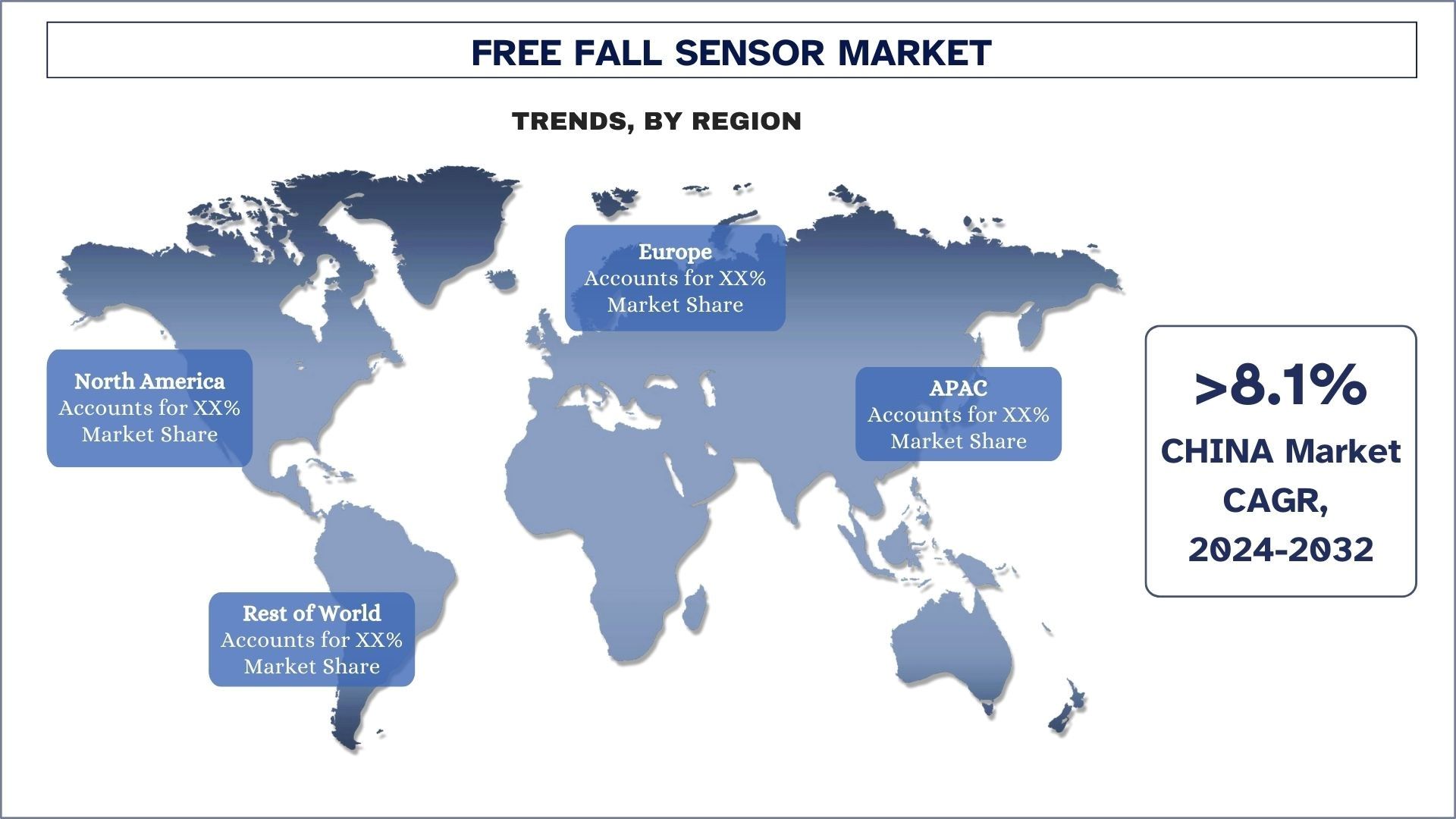
Przegląd branży czujników swobodnego spadania
Rynek czujników swobodnego spadania jest konkurencyjny i rozdrobniony, z obecnością kilku globalnych i międzynarodowych graczy rynkowych. Kluczowi gracze przyjmują różne strategie rozwoju, aby zwiększyć swoją obecność na rynku, takie jak partnerstwa, umowy, współpraca, wprowadzanie nowych produktów, ekspansja geograficzna oraz fuzje i przejęcia. Niektórzy z głównych graczy działających na rynku to Honeywell International Inc., Bosch Sensortec GmbH, Analog Devices, Inc., STMicroelectronics, Texas Instruments Inc., Murata Manufacturing Co., Ltd., Kionix Inc. (A ROHM Group Company), Infineon Technologies AG, NXP Semiconductors i TDK Corporation.
Wiadomości z rynku czujników swobodnego spadania
W styczniu 2025 r. Redwire Corporation (NYSE: RDW), lider w dziedzinie infrastruktury kosmicznej dla gospodarki kosmicznej nowej generacji, ogłosiła, że podpisała ostateczną umowę w sprawie przejęcia Edge Autonomy, wiodącego dostawcy sprawdzonych w terenie technologii bezzałogowych systemów powietrznych („UAS”).
Zakres raportu na temat rynku czujników swobodnego spadania
Atrybut raportu | Szczegóły |
Rok bazowy | 2023 |
Okres prognozy | 2024-2032 |
Dynamika wzrostu | Przyspieszenie przy CAGR na poziomie 7,1% |
Wielkość rynku w 2023 r. | 1 328,3 mln USD |
Analiza regionalna | Ameryka Północna, Europa, APAC, Reszta Świata |
Główny region wnoszący wkład | Oczekuje się, że region Azji i Pacyfiku będzie rósł w najszybszym tempie (najwyższy CAGR) w prognozowanym okresie |
Kluczowe kraje objęte analizą | USA, Kanada, Niemcy, Hiszpania, Włochy, Francja, Wielka Brytania, Chiny, Japonia, Korea Południowa i Indie |
Profilowane firmy | Honeywell International Inc., Bosch Sensortec GmbH, Analog Devices, Inc., STMicroelectronics, Texas Instruments Inc., Murata Manufacturing Co., Ltd., Kionix Inc. (A ROHM Group Company), Infineon Technologies AG, NXP Semiconductors i TDK Corporation. |
Zakres raportu | Trendy rynkowe, czynniki napędzające i ograniczenia; Szacowanie przychodów i prognozy; Analiza segmentacji; Analiza strony popytowej i podażowej; Otoczenie konkurencyjne; Profilowanie firmy |
Powody, dla których warto kupić ten raport:
Badanie obejmuje analizę wielkości rynku i prognoz zweryfikowaną przez uwierzytelnionych kluczowych ekspertów branżowych.
Raport przedstawia szybki przegląd ogólnej wydajności branży na pierwszy rzut oka.
Raport obejmuje dogłębną analizę czołowych firm z branży, z głównym naciskiem na kluczowe dane finansowe, portfele produktów, strategie ekspansji i najnowsze wydarzenia.
Szczegółowe badanie czynników napędzających, ograniczeń, kluczowych trendów i możliwości występujących w branży.
Badanie kompleksowo obejmuje rynek w różnych segmentach.
Dogłębna analiza branży na poziomie regionalnym.
Opcje dostosowywania:
Globalny rynek czujników swobodnego spadania można dodatkowo dostosować zgodnie z wymaganiami lub dowolnym innym segmentem rynku. Ponadto UMI rozumie, że możesz mieć własne potrzeby biznesowe, dlatego skontaktuj się z nami, aby otrzymać raport, który w pełni odpowiada Twoim wymaganiom.
Spis treści
Metodologia badań rynku czujników swobodnego spadania (2024-2032)
Analiza historycznego rynku, szacowanie obecnego rynku i prognozowanie przyszłego rynku globalnych czujników swobodnego spadania to trzy główne kroki podjęte w celu stworzenia i zbadania adopcji czujników swobodnego spadania w głównych regionach na całym świecie. Przeprowadzono wyczerpujące badania wtórne w celu zebrania historycznych danych rynkowych i oszacowania obecnej wielkości rynku. Po drugie, wzięto pod uwagę liczne ustalenia i założenia, aby zweryfikować te spostrzeżenia. Ponadto przeprowadzono wyczerpujące wywiady pierwotne z ekspertami branżowymi w całym łańcuchu wartości globalnego rynku czujników swobodnego spadania. Po założeniu i walidacji danych rynkowych poprzez wywiady pierwotne, zastosowaliśmy podejście odgórne/oddolne do prognozowania całkowitej wielkości rynku. Następnie zastosowano metody podziału rynku i triangulacji danych w celu oszacowania i analizy wielkości rynku segmentów i podsegmentów branży. Szczegółowa metodologia została wyjaśniona poniżej:
Analiza historycznej wielkości rynku
Krok 1: Dogłębne badanie źródeł wtórnych:
Przeprowadzono szczegółowe badanie wtórne w celu uzyskania historycznej wielkości rynku czujników swobodnego spadania za pośrednictwem wewnętrznych źródeł firmowych, takich jak raporty roczne i sprawozdania finansowe, prezentacje wyników, komunikaty prasowe itp., oraz źródeł zewnętrznych, w tym czasopism, wiadomości i artykułów, publikacji rządowych, publikacji konkurencji, raportów sektorowych, baz danych stron trzecich i innych wiarygodnych publikacji.
Krok 2: Segmentacja rynku:
Po uzyskaniu historycznej wielkości rynku czujników swobodnego spadania przeprowadziliśmy szczegółową analizę wtórną w celu zebrania historycznych spostrzeżeń rynkowych i udziałów dla różnych segmentów i podsegmentów dla głównych regionów. Główne segmenty są uwzględnione w raporcie, takie jak typ czujnika i zastosowanie końcowe. Ponadto przeprowadzono analizy na poziomie krajowym w celu oceny ogólnej adopcji modeli testowych w danym regionie.
Krok 3: Analiza czynnikowa:
Po uzyskaniu historycznej wielkości rynku różnych segmentów i podsegmentów przeprowadziliśmy szczegółową analizę czynnikową w celu oszacowania obecnej wielkości rynku czujników swobodnego spadania. Ponadto przeprowadziliśmy analizę czynnikową przy użyciu zmiennych zależnych i niezależnych, takich jak typ czujnika i zastosowanie końcowe rynku czujników swobodnego spadania. Przeprowadzono dokładną analizę scenariuszy popytu i podaży, biorąc pod uwagę najważniejsze partnerstwa, fuzje i przejęcia, ekspansję biznesową i premiery produktów w sektorze czujników swobodnego spadania na całym świecie.
Szacowanie obecnej wielkości rynku i prognoza
Określanie obecnej wielkości rynku: W oparciu o przydatne spostrzeżenia z powyższych 3 kroków doszliśmy do obecnej wielkości rynku, kluczowych graczy na globalnym rynku czujników swobodnego spadania i udziałów w rynku segmentów. Wszystkie wymagane udziały procentowe i podziały rynkowe zostały określone przy użyciu wspomnianego powyżej podejścia wtórnego i zweryfikowane poprzez wywiady pierwotne.
Szacowanie i prognozowanie: Do szacowania rynku i prognozowania przypisano wagi różnym czynnikom, w tym czynnikom napędzającym i trendom, ograniczeniom i możliwościom dostępnym dla zainteresowanych stron. Po przeanalizowaniu tych czynników zastosowano odpowiednie techniki prognozowania, tj. podejście odgórne/oddolne, aby uzyskać prognozę rynkową na rok 2032 dla różnych segmentów i podsegmentów na głównych rynkach na całym świecie. Metodologia badań przyjęta do oszacowania wielkości rynku obejmuje:
Wielkość rynku branży, pod względem przychodów (USD) i wskaźnika adopcji czujników swobodnego spadania na głównych rynkach krajowych
Wszystkie udziały procentowe, podziały i rozbicia segmentów i podsegmentów rynku
Kluczowi gracze na globalnym rynku czujników swobodnego spadania pod względem oferowanych produktów. Ponadto strategie rozwoju przyjęte przez tych graczy, aby konkurować na szybko rozwijającym się rynku
Walidacja wielkości rynku i udziału
Badania pierwotne: Przeprowadzono dogłębne wywiady z kluczowymi liderami opinii (KOL), w tym z kadrą kierowniczą najwyższego szczebla (CXO/VP, szef działu sprzedaży, szef marketingu, szef operacyjny, szef regionalny, szef krajowy itp.) w głównych regionach. Następnie podsumowano wyniki badań pierwotnych i przeprowadzono analizę statystyczną w celu udowodnienia postawionej hipotezy. Dane wejściowe z badań pierwotnych zostały skonsolidowane z wynikami badań wtórnych, dzięki czemu informacje zostały przekształcone w praktyczne spostrzeżenia.
Podział uczestników badań pierwotnych w różnych regionach
Inżynieria rynku
Zastosowano technikę triangulacji danych w celu ukończenia ogólnego szacowania rynku i uzyskania precyzyjnych danych statystycznych dla każdego segmentu i podsegmentu globalnego rynku czujników swobodnego spadania. Dane zostały podzielone na kilka segmentów i podsegmentów po przestudiowaniu różnych parametrów i trendów w obszarach typu czujnika i zastosowania końcowego na globalnym rynku czujników swobodnego spadania.
Główny cel badania globalnego rynku czujników swobodnego spadania
W badaniu wskazano obecne i przyszłe trendy rynkowe na globalnym rynku czujników swobodnego spadania. Inwestorzy mogą uzyskać strategiczne informacje, na których mogą opierać swoje decyzje dotyczące inwestycji, na podstawie analizy jakościowej i ilościowej przeprowadzonej w badaniu. Obecne i przyszłe trendy rynkowe określiły ogólną atrakcyjność rynku na poziomie regionalnym, zapewniając uczestnikom przemysłowym platformę do wykorzystania niewykorzystanego rynku, aby czerpać korzyści z przewagi pioniera. Inne ilościowe cele badań obejmują:
Analiza obecnej i prognozowanej wielkości rynku branży czujników swobodnego spadania pod względem wartości (USD). Ponadto analiza obecnej i prognozowanej wielkości rynku różnych segmentów i podsegmentów
Segmenty w badaniu obejmują obszary typu czujnika i zastosowania końcowego
Definicja i analiza ram regulacyjnych dla branży czujników swobodnego spadania
Analiza łańcucha wartości związanego z obecnością różnych pośredników, wraz z analizą zachowań klientów i konkurentów branży
Analiza obecnej i prognozowanej wielkości rynku czujników swobodnego spadania dla głównego regionu
Główne kraje regionów badanych w raporcie obejmują Azję i Pacyfik, Europę, Amerykę Północną i Resztę Świata
Profile firm z rynku czujników swobodnego spadania oraz strategie rozwoju przyjęte przez uczestników rynku w celu utrzymania się na szybko rozwijającym się rynku
Dogłębna analiza branży na poziomie regionalnym.
Najczęściej zadawane pytania FAQ
P1: Jaka jest obecna wielkość rynku czujników swobodnego spadania i jego potencjał wzrostu?
Wartość rynku czujników swobodnego spadania wyniosła 1 328,3 mln USD w 2023 r. i oczekuje się, że będzie rósł przy wysokim CAGR wynoszącym około 7,1% w okresie prognozy (2024-2032).
P2: Jakie czynniki napędzają wzrost rynku czujników swobodnego spadania?
Rozwój rynku czujników swobodnego spadania jest napędzany rosnącym popytem na trwałą elektronikę użytkową, postępem w zakresie bezpieczeństwa motoryzacyjnego, automatyzacją przemysłową oraz rozwojem technologii ubieralnych.
P3: Który segment ma największy udział w rynku czujników swobodnego spadania według zastosowania końcowego?
Segment elektroniki użytkowej ma największy udział w rynku czujników swobodnego spadania według zastosowania końcowego.
P4: Jakie są wschodzące technologie i trendy na rynku czujników swobodnego spadania?
Nowe technologie i trendy na rynku czujników swobodnego spadania obejmują rozwój zminiaturyzowanych, energooszczędnych czujników, integrację z urządzeniami IoT oraz wdrażanie zaawansowanych algorytmów uczenia maszynowego do konserwacji predykcyjnej.
P5: Który region zdominuje rynek czujników swobodnego spadania?
Oczekuje się, że region APAC zdominuje rynek w okresie prognozy.
Powiązane Raporty
Klienci, którzy kupili ten przedmiot, kupili również

